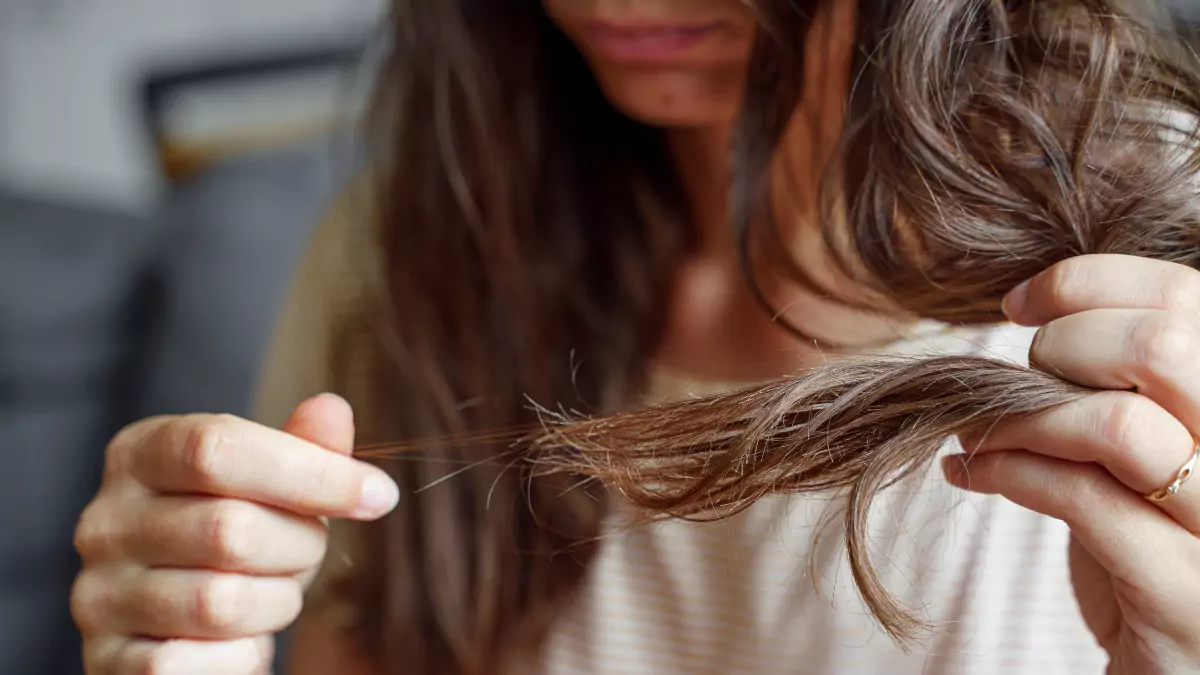Understanding How Much Hair Loss is Normal to Lose Every Day
Hair loss is a natural part of the hair growth cycle, but determining how much hair loss is normal can be confusing and concerning for many individuals.
It is essential to have a clear understanding of what constitutes normal hair shedding in order to distinguish it from excessive or problematic hair loss.
In this article, we will delve into the world of hair loss, examining the underlying causes and providing insights to help you gain a clear understanding of what constitutes normal hair loss.
We will also take a look at the factors that influence hair loss and some tips to promote healthy hair.
Understanding the Hair Growth Cycle

It is crucial to understand the hair growth cycle to comprehend what is considered normal hair loss.
The hair growth cycle encompasses the following phases.
Anagen phase
It is the active growth phase, where hair follicles produce new hair strands.
This phase can last between two to six years and determines the length of your hair.
Catagen phase
This is the transitional phase that lasts for a few weeks.
During this time, the hair follicles shrink and separate from the blood supply.
Telogen phase
This is the resting phase, and it typically lasts for two to three months.
At this stage, the hair follicle is inactive, and the old strand is eventually shed to make way for new hair growth.
During this phase, the hair sheds from the scalp due to washing or brushing, etc.
How many hairs do you lose a day
On average, individuals lose approximately 50 to 100 strands of hair per day, which is considered normal hair shedding.
If a person loses more hair than that, it is a sign of excessive hair shedding, a condition referred to as Telogen Effluvium.
Factors influencing hair loss
A lot of factors can contribute to increased hair shedding.
However, certain situations, such as washing or combing your hair, may also cause temporary increases in hair shedding.
Other factors include
Age
As we age, hair growth naturally slows down, resulting in thinner and more fragile hair strands.
This gradual change in the hair growth cycle can lead to increased hair loss.
Genetics
Hereditary factors play a significant role in determining the thickness and density of your hair.
Conditions like Androgenetic Alopecia (Pattern Baldness) can be inherited and result in increased hair loss over time.
Hormonal changes
Hormonal imbalances due to pregnancy, menopause, or thyroid disorders can trigger excessive hair shedding.
This type of hair loss is often temporary and resolves once the hormonal balance is restored.
Stress and emotional well-being
High levels of stress can disrupt the normal hair growth cycle, leading to excessive hair loss.
Additionally, conditions such as Trichotillomania (hair-pulling disorder) may result in excessive hair loss due to psychological factors.
Nutritional deficiencies
A lack of essential nutrients, like zinc, iron, and biotin, can contribute to hair loss.
Maintaining a well-balanced diet and addressing any nutritional deficiencies can help prevent excessive shedding.
Tips to promote healthy hair
While it is normal to experience some hair loss, certain practices can help maintain healthy hair and minimize excessive shedding.
Follow a nutritious diet
Ensure your diet includes a variety of vitamins, minerals, and proteins that are vital for hair health.
Foods such as leafy greens, eggs, nuts, and fish are rich in nutrients that support hair growth.
Practice gentle hair care
Avoid harsh hair treatments, excessive heat styling, and tight hairstyles that can potentially put stress on the hair shafts.
Use a wide-toothed comb or a brush that has soft bristles to minimize breakage.
Manage stress

Engage in stress-reducing activities such as meditation, exercise, or hobbies that promote relaxation.
Reducing stress levels can positively impact hair health.
Consult a professional
If you observe excessive hair loss or have any concerns about your hair health, it is advisable to consult a dermatologist or a trichologist.
They can evaluate your specific situation, provide guidance, and recommend appropriate treatments if necessary.
You can buy it from WowRx at reasonable prices:
Takeaway
Experiencing some degree of hair loss is a normal part of the hair growth cycle.
On average, losing 50 to 100 strands of hair per day is considered within the range of normal shedding.
However, it is important to recognize that certain factors, such as genetics, age, hormonal changes, and lifestyle choices, can influence the amount of hair loss one experiences.
Understanding the underlying causes of hair loss and adopting healthy hair care practices can promote optimal hair health and reduce excessive shedding.
Remember, maintaining a balanced approach to hair care and seeking professional advice when needed will help you navigate the journey to healthier, more resilient hair.
Frequently Asked Questions
Is it normal to lose hair every day?
Yes, it is normal to lose around 50 to 100 strands of hair per day. Factors like genetics, age, and lifestyle choices can influence the amount of hair loss. Excessive shedding or sudden hair loss may require further evaluation by a healthcare professional.
How much hair loss is worrying?
Excessive or sudden hair loss that goes beyond the average range of 50 to 100 strands per day may be a cause for concern. If you observe clumps of your hair falling out, significant thinning, or bald patches, it is advisable to consult a healthcare professional for evaluation and guidance.
How can I stop excessive hair loss?
To address excessive hair loss, focus on maintaining a healthy lifestyle. This includes eating a well-balanced diet abundant in nutrients, avoiding harsh hair treatments, minimizing heat styling, managing stress levels, and seeking professional guidance if the problem persists.
WowRx uses only high-quality sources while writing our articles. Please read our content information policy to know more about how we keep our content reliable and trustworthy.






